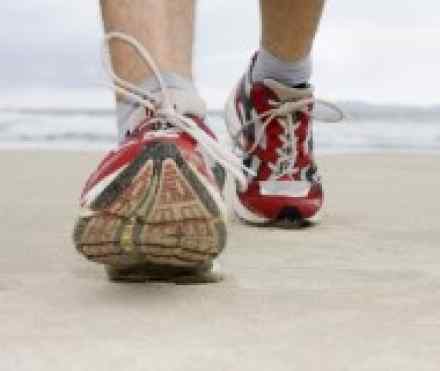
What is it?
Restless legs syndrome (RLS) is a condition in which your legs feel extremely uncomfortable while you're sitting or lying down. It makes you feel like getting up and moving around. When you do so, the unpleasant feeling of restless legs syndrome temporarily goes away.
Restless legs syndrome can begin at any age and generally worsens as you get older. Women are more likely than men to develop this condition. Restless legs syndrome can disrupt sleep — leading to daytime drowsiness — and make traveling difficult.
A number of simple self-care steps and lifestyle changes may help you. Medications also help many people with restless legs syndrome.
Symptoms
Commonly described sensations
People typically describe restless legs syndrome (RLS) symptoms as unpleasant sensations in their calves, thighs, feet or arms, often expressed as:
- Crawling
- Tingling
- Cramping
- Creeping
- Pulling
- Painful
- Electric
- Tense
- Uncomfortable
- Itchy
- Tugging
- Gnawing
- Aching
- Burning
Sometimes the sensations seem to defy description. Affected people usually don't describe the condition as a muscle cramp or numbness. They do, however, consistently describe the desire to move or handle their legs.
It's common for symptoms to fluctuate in severity, and occasionally symptoms disappear for periods of time.
Commonly reported patterns
Common characteristics of RLS signs and symptoms include:
- Starts during inactivity. The sensation typically begins after you've been lying down or sitting for an extended period of time, such as in a car, airplane or movie theater.
- Relief by movement. The sensation of RLS lessens if you get up and move. People combat the sensation of restless legs in a number of ways — by stretching, jiggling their legs, pacing the floor, exercising or walking. This compelling desire to move is what gives restless legs syndrome its name.
- Worsening of symptoms in the evening. Symptoms typically are less bothersome during the day and are felt primarily at night.
- Nighttime leg twitching. RLS may be associated with another condition called periodic limb movements of sleep (PLMS). Once called myoclonus, PLMS causes you to involuntarily flex and extend your legs while sleeping — without being aware you're doing it. Hundreds of these twitching or kicking movements may occur throughout the night. If you have severe RLS, these involuntary kicking movements may also occur while you're awake. PLMS is common in older adults, even without RLS, and doesn't always disrupt sleep. More than 4 out of 5 people with RLS also experience PLMD.
Causes
In many cases, no known cause for restless legs syndrome exists. Researchers suspect the condition may be due to an imbalance of the brain chemical dopamine. This chemical sends messages to control muscle movement.
Heredity
RLS runs in families in up to half the people with RLS, especially if the condition started at an early age. Researchers have identified sites on the chromosomes where genes for RLS may be present.
Pregnancy
Pregnancy or hormonal changes may temporarily worsen RLS signs and symptoms. Some women experience RLS for the first time during pregnancy, especially during their last trimester. However, for most of these women, signs and symptoms usually disappear quickly after delivery.
Related conditions
For the most part, restless legs syndrome isn't related to a serious underlying medical problem. However, RLS sometimes accompanies other conditions, such as:
- Peripheral neuropathy. This damage to the nerves in your hands and feet is sometimes due to chronic diseases such as diabetes and alcoholism.
- Iron deficiency. Even without anemia, iron deficiency can cause or worsen RLS. If you have a history of bleeding from your stomach or bowels, experience heavy menstrual periods or repeatedly donate blood, you may have iron deficiency.
- Kidney failure. If you have kidney failure, you may also have iron deficiency, often with anemia. When kidneys fail to function properly, iron stores in your blood can decrease. This, along with other changes in body chemistry, may cause or worsen RLS.
Risk factors
RLS can develop at any age, even during childhood. Many adults who have RLS can recall being told as a child that they had growing pains or can remember parents rubbing their legs to help them fall asleep. The disorder is more common with increasing age.
Complications
Although RLS doesn't lead to other serious conditions, symptoms can range from barely bothersome to incapacitating. Many people with RLS find it difficult to get to sleep or stay asleep. Insomnia may lead to excessive daytime drowsiness, but RLS may prevent you from enjoying a daytime nap.
Diagnosis
Doctors diagnose RLS by listening to your description of your symptoms and by interviewing you about your medical history. In order to be diagnosed with RLS, you must meet four criteria established by the International Restless Legs Syndrome Study Group:
- You have a strong, often irresistible urge to move your legs, usually accompanied by uncomfortable sensations. These sensations are typically described as crawling, creeping, cramping, tingling, pulling, tugging or itching.
- Your symptoms start or get worse when you're resting, such as sitting or lying down.
- Your symptoms are partially or temporarily relieved by activity, such as walking or stretching, for as long as you keep moving.
- Your symptoms are worse at night.
Blood tests or muscle or nerve studies may be ordered to exclude other possible causes for your symptoms.
In addition, your doctor may refer you to a sleep specialist for additional evaluation. This may require that you stay overnight at a sleep clinic, where doctors can study your sleep habits closely and check for leg twitching (periodic limb movements) during sleep — a possible sign of RLS. However, a diagnosis of RLS usually doesn't require a sleep study.
References
http://www.webmd.com/brain/restless-legs-syndrome/default.htm
http://www.nhs.uk/Conditions/Restless-leg-syndrome/Pages/Introduction.aspx
http://www.healthline.com/health/restless-leg-syndrome/treatments#Gabapentin8
http://www.thelancet.com/journals/laneur/article/PIIS1474442205701393/abstract

